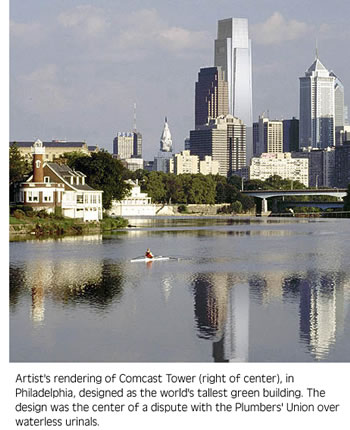
Limitations
- Introduction
- Avoiding the Obvious
- Insoluble Problems, Soluble Opportunities
- Bottomless Wells?
- Oil, Peaking?
Values
- Introduction
- Trouble with Ideology
- The Good Life
- Changing Separately and Together
- Eating for the Planet
- Small Steps, Large Ideals
- Offsetting Without Tears
Design
- Introduction
- Dead Spaces
- Requiem for the Car Industry
- Smart Cars, Hybrids, and Our Spaceship
- Hip Deep in the Big Muddy
- The Virtues of Age
- Two Suburbs—An American Journey
- The Wasteland at the End of the Street
Strategy
![]()
Insoluble Problems, Soluble Opportunities
 In one episode of Yes, Prime Minister, the British political satire, the Prime Minister tells his cabinet that "every problem is also an opportunity." His Cabinet Secretary, a high-ranking civil servant, then observes that the cabinet must beware of creating "insoluble opportunities."
In one episode of Yes, Prime Minister, the British political satire, the Prime Minister tells his cabinet that "every problem is also an opportunity." His Cabinet Secretary, a high-ranking civil servant, then observes that the cabinet must beware of creating "insoluble opportunities."
It is a wonderful exchange, and it tells us a lot about ourselves and the debate over climate change. Mainstream commentators no longer doubt the reality of climate change, but they see only problems in trying to cope with it. Cutting greenhouse gas emissions, it is argued, would do enormous economic damage, especially cutbacks at the levels recommended by scientists and the United Nations in its latest report. It is fraught with problems, so we cannot do it—or at least not at the recommended levels.
But, as the Prime Minister observed, every problem is an opportunity. Not every problem has a solution, but every problem gives us a chance to think anew about how we work, play, travel, and live our lives. And we may never cut back our emissions as much as we would like, but the effort to do so—to rethink our approaches—can lead us toward a better world even if we are not entirely successful.
Consider the problem of buildings. Buildings are one of the major sources of greenhouse gas emissions. They are also one of the areas where change means opportunity, not privation. Retrofitting old buildings for more sustainability; designing new ones with smaller carbon footprints; even simple actions like installing insulation in old houses—all of these measures involve investment, money, and jobs. They are not insoluble problems, but soluble opportunities.
The central problem with buildings is not the technology. Architects already know how to build more sustainable buildings and refit old ones, and over time they will find better ways to do so. The central problem is with ourselves, and the saga of the Comcast Tower in Philadelphia is a good example.
The Comcast Tower was designed to be the world's tallest green building. Among its features was exclusive use of waterless urinals, a new technology that is known to save tens of thousands of gallons of water over time. The Philadelphia Plumber's Union, which has a great deal of political clout, objected. The objections delayed construction on the building and threatened to undercut its green certification. The problem, according to the plumbers, was that waterless urinals would result in less work for members of the union. They were a problem—not an opportunity.
The plumbers were trapped in old thinking. It is perfectly true that installing waterless urinals takes less time (and is therefore less lucrative) than installing conventional ones. But waterless technology is the future; conventional plumbing is the past. The Plumber's Union failed to see the opportunity to master a new technology which, in the long run, would preserve its members' jobs as new buildings adopted the new urinals and older ones converted to them. If Plumber's Union members would not install the technology of the future, someone else would. Failure to adapt, as in most situations, would mean failure to thrive.
A more sustainable society need not be a society in economic collapse. It could be a better place to live than our current world. But we will not see this, let alone achieve it, if, like the Plumber's Union, we fail to see that every problem is also an opportunity.